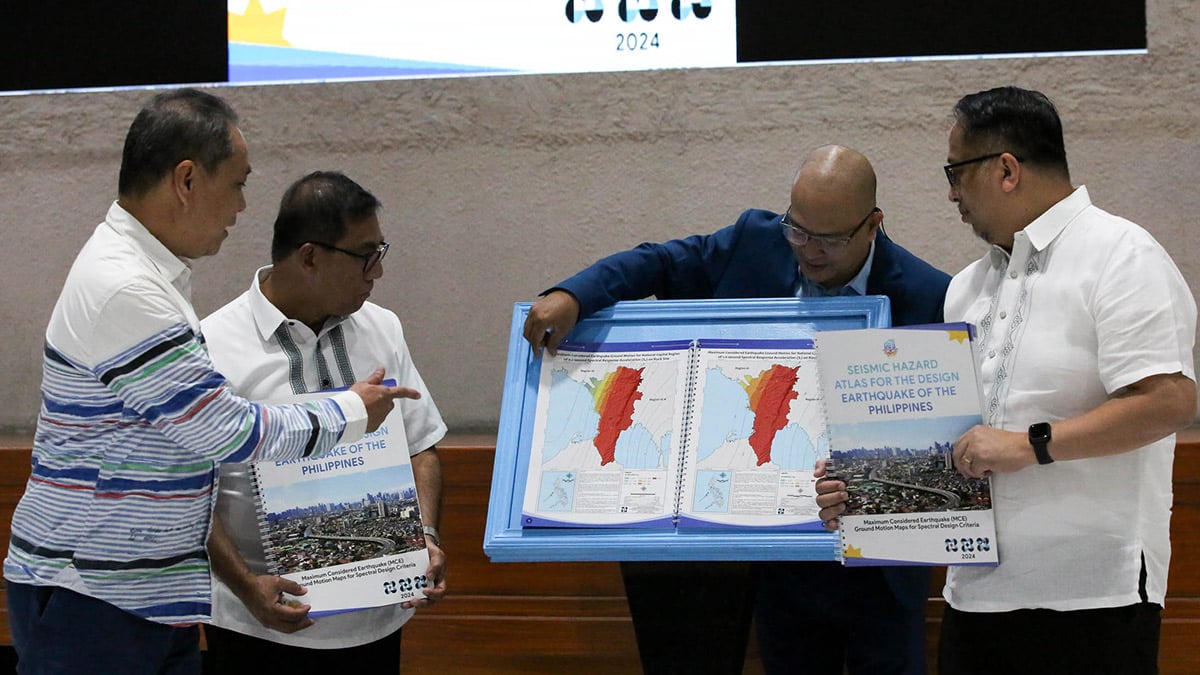Seismic hazard atlas launched as guide for building construction

CRUCIAL PROJECT FOR DEVELOPERS Science and Technology Secretary Renato SolidumJr. (second from left) listens while Supervising Science Research Specialist Rhommel Grutas of Phivolcs (third from left) explains the Seismic Hazard Atlas during its launching on Nov. 21. —Lyn Rillon
MANILA, Philippines — In a bid to improve disaster mitigation in the country, a seismic hazard atlas was developed by the Philippine Institute of Volcanology and Seismology (Phivolcs) containing maps and other resources that will help determine the construction of earthquake-resilient buildings.
Phivolcs unveiled last week the Seismic Hazard Atlas for the Design Earthquake of the Philippines, which featured seismic maps developed by the Department of Science and Technology (DOST) in the past years.
“This atlas is a crucial resource for improving the safety and durability of buildings across the country, providing the scientific foundation for earthquake-resistant design practices,” read the press release by Phivolcs.
READ: Marcos calls for updated flood hazard maps
According to Phivolcs, the atlas includes “high-quality seismic hazard ground motion maps that will serve as a critical tool for structural design and urban planning in earthquake-prone areas.”
Location data
These maps show areas in the country that have active fault lines and identify possible hazards in the construction of buildings.
“When we want to really prepare the Philippines for its various natural hazards, we need to make sure that the location of our structures are in a less hazardous place, or for us to be able to make it resilient,” Science and Technology Secretary Renato Solidum Jr. said during the launching at the Phivolcs office in Quezon City.
In particular, the maps “will provide engineers, urban planners, and other professionals with the data needed to make informed decisions for seismic design and analysis,” Phivolcs Director Teresito Bacolcol said.
One such feature is the first Transition Long-Period Map of the Philippines, which aims to help engineers assess the impact of long-period ground motions on buildings, particularly high-rises.
“Some results show that [building] designs should be lower in certain areas. So there are areas that should be lower, there are areas that should be higher,” Solidum said.
“But in summary, we are providing the engineering and science data to provide for a more appropriate building design,” he added.
“The successful development of the Seismic Hazard Atlas for Design Earthquakes in the Philippines marks a significant milestone in our ongoing efforts to enhance disaster risk mitigation across the nation, making us at par or at the same level as other advanced countries,” Solidum said.
The project was implemented by Phivolcs with the support of DOST and its attached agency Philippine Council for Industry, Energy and Emerging Technology Research and Development, as well as the Association of Structural Engineers of the Philippines.